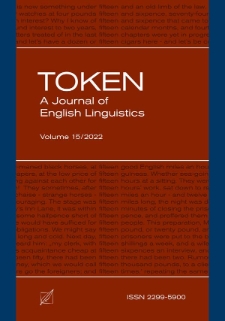Digital Library of the Jan Kochanowski University contains 13 273 digital objects
Object
Title: Linguistics for children : The intermodal presentation of English grammar metalanguage in materials for young learners
Creator:
Group publication title:
Contributor:
Newman, John G. Ed. ; Dossena, Marina. Ed. ; Shvanyukova, Polina. Ed. ; Bianchi, Francesca. Guest ed. ; Bruti, Silvia. Guest ed. ; Cappelli, Gloria. Guest ed. Manca, Elena. Guest ed.
Abstract:
Grammar has been slowly reintroduced in British schools thanks to projects such as the New National Curriculum for English, which explicitly include the “understanding of grammar” and the terminology required to discuss linguistic facts as objects of teaching. Many books that focus on grammar metalanguage instruction have appeared. A qualitative analysis of strategies adopted in an effort to produce a selection of materials for young learners (Years 1-6) shows that most publications feature a multimodal popularizing approach, akin to that of other types of scientific knowledge dissemination for children. This suggests that grammar terms are treated like specialized terminology, and that, although no true recontextualization of specialized concepts can be observed, reformulation and adaptation are pervasive in order to meet the needs, tastes and cognitive skills of the young “lay reader”. For this reason, grammar teaching resources can be seen as a special form of popularization of linguistics for kids.
Table of contents:
Spis treści Francesca Bianchi, Silvia Bruti, Gloria C appelli and Elena Manca, Introduction 5 Elena Manca and Cinzia Spinzi, A cross-cultural study of the popularization of environmental issues for a young audience in digital spaces 19 Silvia Bruti, Ecology for children: Examples from popularizing texts in English and Italian 47 Katia Peruzzo, Empowering children: The UN Convention on the Rights of the Child and its English and Italian child-friendly versions 71 Gianmarco Vignozzi, Kids in the House: How the U.S. House of R epresentatives addresses youngsters 97 Silvia Cacchiani, What is Copyright? Communicating specialized knowledge on CBBC 125 Olga Denti and Giuliana Diani, “Hello, my name is Coronavirus”: Popularizing COVID-19 for children and teenagers 151 Jekaterina Nikitina, Popularizing the Covid-19 pandemic to young children online: A case study 181 Silvia Masi, Disseminating knowledge through TED Talks for children 211 Francesca Bianchi and Elena Manca, Rewriting novels for a young audience: A corpus-assisted comparison between two versions of The Da Vinci Code by Dan Brown 239 Judith Turnbull, Popularizing diversity for children in videos on YouTube 259 Gloria Cappelli, Linguistics for children: The intermodal presentation of English grammar metalanguage in materials for young learners 287 Maria Elisa Fina, Popularizing art for children at the MoMA: A multimodal analysis of the audio-delivered pictorial descriptions 319 Annalisa Sezzi, An intergalactic journey to the popularization of modern art in museum-based websites for children 343
Place of publishing:
Physical description:
Additional notes:
Special issue on popularisation, dissemination and rewriting for young audiences
ISSN:
Publisher:
Jan Kochanowski University Press
Date issued:
Identifier:
oai:bibliotekacyfrowa.ujk.edu.pl:12861 doi:10.25951/9754
Language:
Is part of:
Token : A Journal of English Linguistics
Type:
Access rights:
Format:
Object collections:
- JKU Digital Library > University Publishing > Serial publications > "Token : A Journal of English Linguistics"
Last modified:
Apr 4, 2025
In our library since:
Apr 4, 2025
Number of object content hits:
69
All available object's versions:
https://bibliotekacyfrowa.ujk.edu.pl/publication/9754
Show description in RDF format:
Show description in OAI-PMH format:
Objects Similar
Bianchi,Francesca Bruti, Silvia Cappelli, Gloria Manca, Elena Newman, John G. Ed. Dossena, Marina. Ed. Shvanyukova, Polina. Ed. Bianchi, Francesca. Guest ed. Bruti, Silvia. Guest ed. Cappelli, Gloria. Guest ed. Manca, Elena. Guest ed.

